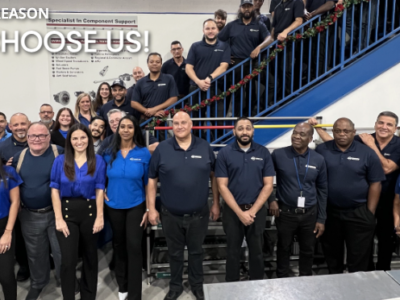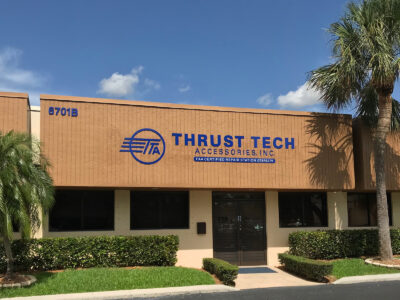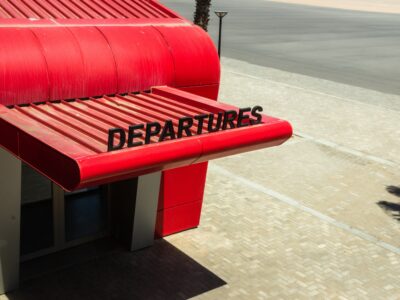
We are all familiar with the concept of the “coworking space.” It’s an idea that’s grown exponentially in recent years where sole proprietors or small businesses needing to control the costs of running an office will pay a fee to rent a share of a brick-and-mortar space in order to have guaranteed limited access to an office they can call their “own” when they need it.
In a similar fashion, with fractional aircraft ownership (FAO), an individual or a company will buy a share of an aircraft, rather than an entire aircraft. The price is prorated to the market price of a full aircraft. Owners then have guaranteed limited access to that aircraft or a similar type in the operator’s fleet proportional to the size of the share. Fractional owners also pay a monthly maintenance fee and an occupied hourly operating fee.
And not unlike the coworking-space concept, FAO has become quite fashionable. With the changing economy and higher interest rates in many parts of the world, and a rise in the number of ultra-high net worth individuals globally, it is anticipated that even more people will be drawn into purchasing a fraction of an aircraft, this year and well beyond.
As the popularity of fractional ownership grows, so too does the reliance on the MRO industry by fleet operators.
All this to say, as the popularity of FAO grows, so too does the reliance on the MRO industry by fleet operators to keep their aircraft operating. Essentially, fractional ownership drives increased service demand, creates opportunities for economies of scale, fosters specialized expertise, and influences how some maintenance operations are structured and managed. If embraced appropriately, the wise MRO adapts to and benefits greatly by the unique challenges and opportunities presented by the evolving landscape of fractional ownership.
Let’s Take a Closer Look at the Impact on MROs
Increased Demand for Services: FAO means multiple owners sharing a single aircraft. This often leads to significantly more flight hours and demand for the aircraft compared to non-fractional ownership. This of course leads to a higher demand for maintenance, overhaul, and repair services to ensure the aircraft remains safe, reliable, and compliant with aviation regulations.
Predictable Revenue Streams: Members of a fractional ownership program often enjoy established maintenance schedules and requirements. This predictability allows MROs to plan their resources, workforce, and parts inventory more efficiently. This can be a win-win insofar as improved cost management and more efficient operations.
Specialized Expertise: Typically, someone in a fractional ownership program possesses a high-performance or specialized aircraft. Effective MROs can position themselves to develop expertise and capabilities to service these specific aircraft types. As word gets out on MROs that focus on this type of specialization, it can lead to increased demand for their services from both fractional ownership providers and other operators of similar aircraft as well.
Challenges with Availability: The lack of availability with regard to parts and services is a real challenge for every industry – and aviation is often embroiled in these same challenges every day. The consistency and predictability of regularly scheduled maintenance and a customer base on which you can rely go a long way to keeping the necessary parts and humans in a position to better service their clients and helping to avoid bottlenecks or scheduling conflicts.
The Evolution of Aircraft Fractional Ownership
According to an article published by Embry-Riddle Aeronautical University, fractional ownership in its current form was launched in 1987. It evolved from a program that began in 1964 when the Pennsylvania Railroad put up the capital to finance Executive Jet Airways.
Ten Learjet 23 aircraft were purchased with the mission to sell “blocks of usage” providing customers with business jet transportation wherever they wanted to go. The concept was based on the Air Forces’ Special Air Mission Squadron. In the Air Force program when an aircraft was dispatched from one location to another it would remain “in place” until needed for another flight originating from there.
Ideally, the next flight would originate from the aircraft’s present location, if not it would be repositioned at the nearest point of need. From the outset of Executive Jet Airways to the present day, the cost of these “positioning flights” or “deadhead legs” were invisible to the customer who paid only for “occupied flight hours. “The basis of the FAO concept was to combine the flexibility of chartering with the advantages of ownership.
The basis of the fractional ownership concept is to combine the flexibility of chartering with the advantages of ownership.
The basis of the FAO concept was to combine the flexibility of chartering with the advantages of ownership. As we’ve noted, this concept is not new, however, the genius of fractional ownership comes in the form of a “core fleet” of aircraft – a group of airplanes owned by the fractional ownership provider directly and not resold to users. This fleet is used to supply transportation to shareowners when the inevitable scheduling conflicts occur. The application of the core fleet concept has proven to be the basis of fractional ownership success.
A few notable players in this niche include:
So Just How Popular is the Fractional Ownership?
In a recent news report, Volato announced it is significantly expanding its fleet of HondaJets with the Elite II, considered to be the “fastest, farthest, highest-flying plane in class. A seasoned customer who already is one of the biggest HondaJet cheerleaders, Volato currently has 17 airframes in operation and are now adding 24 of the new HondaJet Elite II (TTA, Aug. 2023). This signifies a huge investment in the future FAO market.
Pros and Cons of Fractional Ownership
The reality of fractional aircraft ownership comes with a mixed bag of challenges, pitfalls, and benefits. It can be a great option for those who require consistent private air travel and are willing to commit to financial and operational responsibilities. However, potential owners should consider these factors as they apply to their own needs and business style before locking in on fractional ownership.
The Pros of FAO: Fractional jet ownership is very cost-effective as you won’t have to pay for an entire jet, and you’ll avoid paying the full costs associated with a jet’s services, maintenance, and crews. This style of ownership allows you to access property that would otherwise be cost-prohibitive while still having an investment stake in the property. By owning a portion of it you can benefit from potential rental income when it’s not in use or sell your stake at a profit if it goes up in value.
Fractional owners also enjoy predictable expenses, as they typically pay a static monthly amount that covers their portion of the costs including maintenance, crew salaries, and insurance. Professional management is a key benefit of this style of aircraft ownership as of ownership programs are often managed by experienced aviation companies. These companies handle all the necessary tasks like scheduling, maintenance, and other operational aspects that aircraft owners can find tedious, which reduces the administrative burden on owners.
The Cons of FAO: Less flexibility and freedom, meaning that all decisions about maintenance, repairs, and decor must go through all ownership partners, and this can be a hassle. If you ever want to sell a fractional property, the sale will also have to be approved by the other fractional owners.
Other disadvantages may include use limitations based on share size, aircraft limitations depending on fractional jet ownership program, and the fleet under management. Some companies also restrict flight schedules during peak times.
It is also prudent to consider cost and commitment. While FAO can be more affordable than full aircraft ownership, it still requires a significant financial investment. Buyers should be prepared for initial acquisition costs, periodic maintenance fees, and general operational expenses. Dissolving a fractional ownership can be complicated. Finding the right buyer to assume a fractional ownership arrangement might not be as simple as selling a whole aircraft, and notably, the fluctuation of market conditions can impact the value of the ownership.
If You Wish to Dig Deeper…
- Is Fractional Ownership Right for Your Business
- Strategic Planning in Fractional Aircraft Ownership Programs
About Thrust Tech Accessories
With capabilities that include testing, repair service, overhaul service, and of course fast turnaround times, TTA supports a number of regional airlines across the U.S., along with overseas air carriers and rotorcraft operators in numerous countries around the globe. To learn how TTA may support your fleet and to obtain competitive program bids, send an email to TTAsales@TrustTech.com or call 954-984-0450.
PHOTO CREDIT: Ramon Kagie






